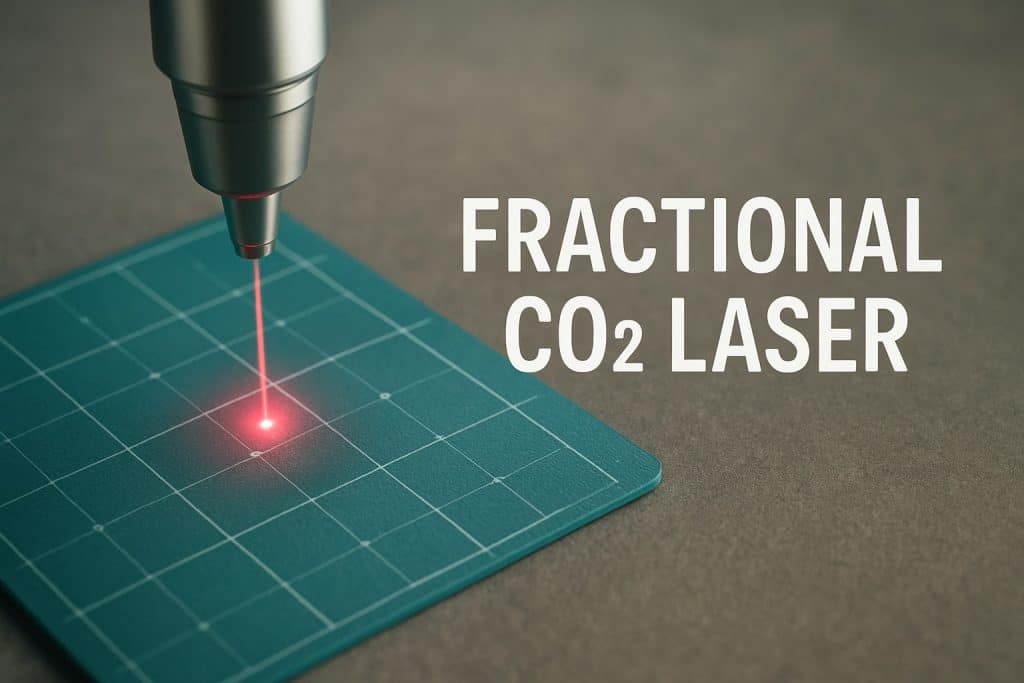Are you searching for a breakthrough in skin rejuvenation? In 2025, advanced treatments like fractional co2 laser are transforming the way we address wrinkles, scars, and sun damage.
This comprehensive guide will explain everything you need to know about fractional CO2 laser, from how the technology works to the results you can expect.
You will discover the science behind the procedure, who makes the best candidate, the step-by-step treatment process, benefits, risks, aftercare essentials, and tips for selecting the right provider.
Ready to find out if this is the solution for you? Explore how this gold standard treatment can renew your skin and boost your confidence in 2025.
What Is Fractional CO2 Laser Resurfacing?
Fractional CO2 laser resurfacing is a cutting-edge cosmetic procedure that uses a specialized carbon dioxide laser to rejuvenate skin by treating wrinkles, scars, sun damage, and uneven texture. In 2025, this technology stands out as a gold standard for those seeking dramatic skin renewal with minimal invasiveness.
Unlike traditional lasers, the fractional CO2 laser works by precisely targeting thousands of microscopic zones in the skin. This "fractional" approach means only a fraction of the skin is treated at each session, leaving surrounding tissue untouched. The result is faster healing and less downtime compared to older, fully ablative lasers.
The device emits a specific wavelength of light absorbed by water in the skin. This energy vaporizes tiny columns of skin tissue, stimulating the body's natural healing process. As new collagen and elastin form, the skin becomes smoother, firmer, and more youthful in appearance.
A key advantage of fractional CO2 laser technology is its versatility. It can address a wide range of concerns, including:
- Fine lines and deep wrinkles (especially around the eyes and mouth)
- Acne scars and surgical scars
- Sun damage and age spots
- Enlarged pores
- Mild to moderate skin laxity
This method is often compared to other resurfacing treatments such as Er:YAG lasers and non-ablative options like Fraxel. See the table below for a quick comparison:
| Technology | Depth of Treatment | Downtime | Main Indications |
|---|---|---|---|
| Fractional CO2 | Deep/Ablative | 5-14 days | Wrinkles, scars, laxity |
| Er:YAG | Superficial | 3-7 days | Fine lines, pigment |
| Fraxel (non-abl.) | Moderate | 1-5 days | Texture, mild scars |
Fractional CO2 laser resurfacing received FDA approval for multiple skin concerns and has a high clinical safety profile as of 2025. Patient safety is enhanced by advanced devices and strict protocols. Recent statistics show a surge in popularity among adults aged 30 to 60, with the procedure ranking among the top five cosmetic treatments in North America.
For those considering the procedure, before-and-after results are compelling. For example, a patient with moderate acne scarring often sees visibly smoother skin and reduced scar depth after just one session. Similarly, periorbital wrinkles (around the eyes) can appear significantly softened, restoring a more youthful look.
To explore the full range of fractional CO2 laser options, technology, and results available in your area, you can visit Laser Skin Resurfacing in Toronto for detailed information and treatment insights.
Fractional CO2 laser resurfacing continues to evolve, offering effective, safe, and customizable solutions for a diverse range of skin concerns in 2025.
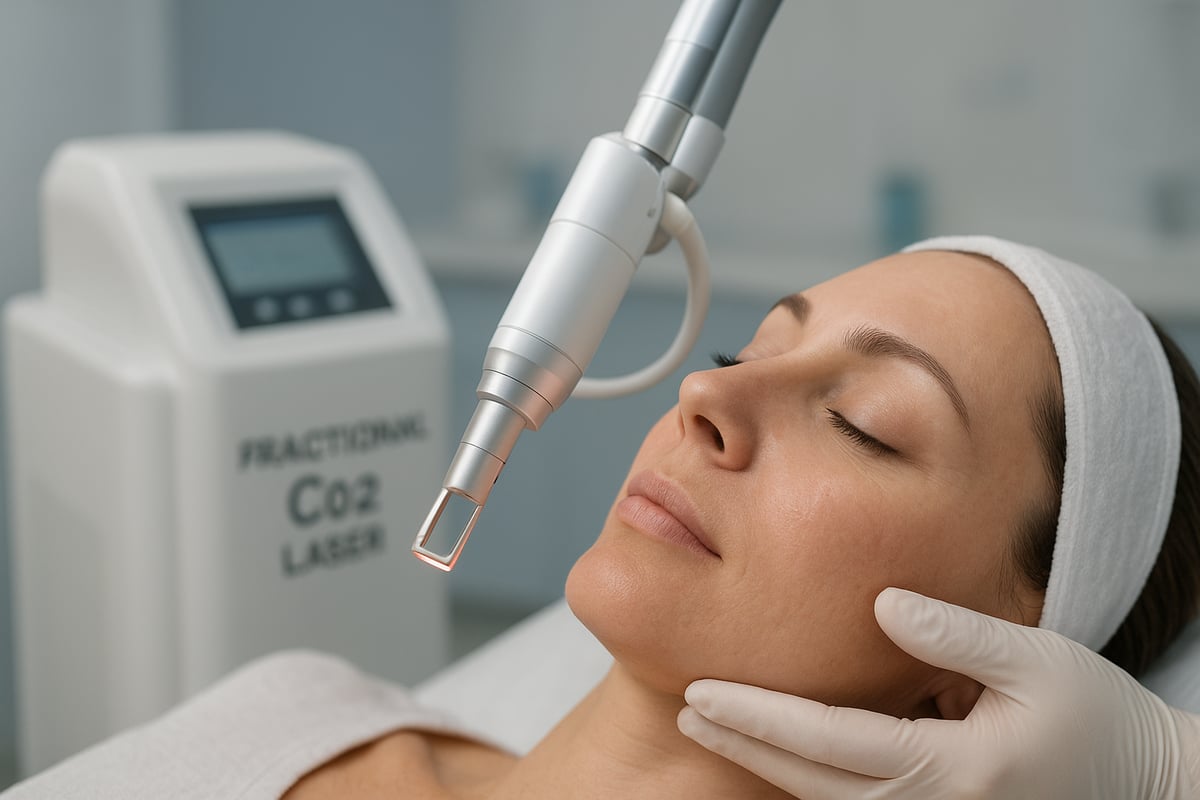
Who Is a Good Candidate for Fractional CO2 Laser in 2025?
Understanding who benefits most from fractional co2 laser is key to achieving optimal results. This advanced technology is designed for individuals seeking significant improvement in skin texture, tone, and firmness. In 2025, both women and men aged 30 to 60 are increasingly turning to fractional co2 laser for its proven ability to address aging signs, scars, and sun damage.
A thorough skin assessment by a qualified provider helps determine suitability. The ideal candidate typically has realistic expectations and is committed to following pre- and post-treatment care. Recent trends show more men and younger adults using fractional co2 laser for preventative rejuvenation, aiming to delay visible aging before it starts.
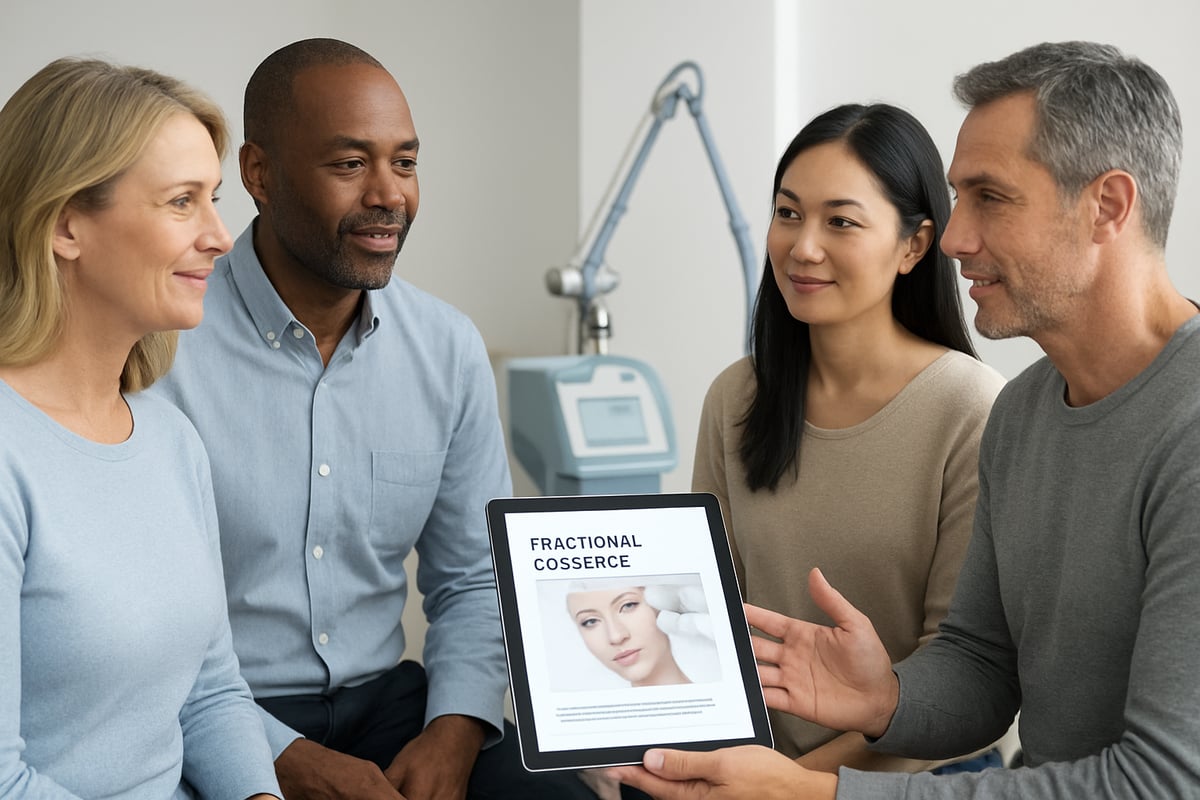
Conditions Best Treated by Fractional CO2 Laser
Fractional co2 laser excels at targeting a wide range of skin concerns. Its precision makes it especially effective for:
- Deep wrinkles around the mouth and eyes
- Acne and surgical scars
- Stretch marks (striae)
- Hyperpigmentation and melasma (with caution)
- Enlarged pores and uneven skin texture
Individuals with fair to medium skin tones often see the most dramatic improvements, but emerging protocols in 2025 have expanded safe use for darker skin types. A recent study on fractional CO₂ laser in Latin American skin highlights its effectiveness for various dermatological conditions, emphasizing the importance of expert technique for safety and results.
For example, a 45-year-old woman with sun damage and a 35-year-old man with acne scars may both benefit from fractional co2 laser, experiencing smoother, firmer skin after just one session. In fact, over 80 percent of patients report a noticeable reduction in wrinkles or scars following their initial treatment.
Who Should Avoid or Postpone Treatment?
Not everyone is an immediate candidate for fractional co2 laser. Certain conditions or recent skin events may require postponing the procedure:
- Recent sunburn or tanning
- Active skin infections or flare-ups (herpes, eczema, psoriasis)
- Current use of photosensitizing medications
- History of keloid formation or poor wound healing
Pregnant individuals, those with recent isotretinoin use, or active acne should also avoid fractional co2 laser until cleared by a medical professional. A comprehensive medical history review is essential to ensure the highest level of safety and efficacy.
Ultimately, the best results come from a personalized approach. A professional consultation will help you determine if fractional co2 laser fits your skin goals and medical background.
The Fractional CO2 Laser Treatment Process: Step-by-Step
Undergoing a fractional co2 laser treatment in 2025 is a precise, multi-step process designed for safety, comfort, and optimal results. Whether you are new to cosmetic dermatology or have explored other skin rejuvenation methods, understanding each phase helps set realistic expectations and ensures the best outcome.
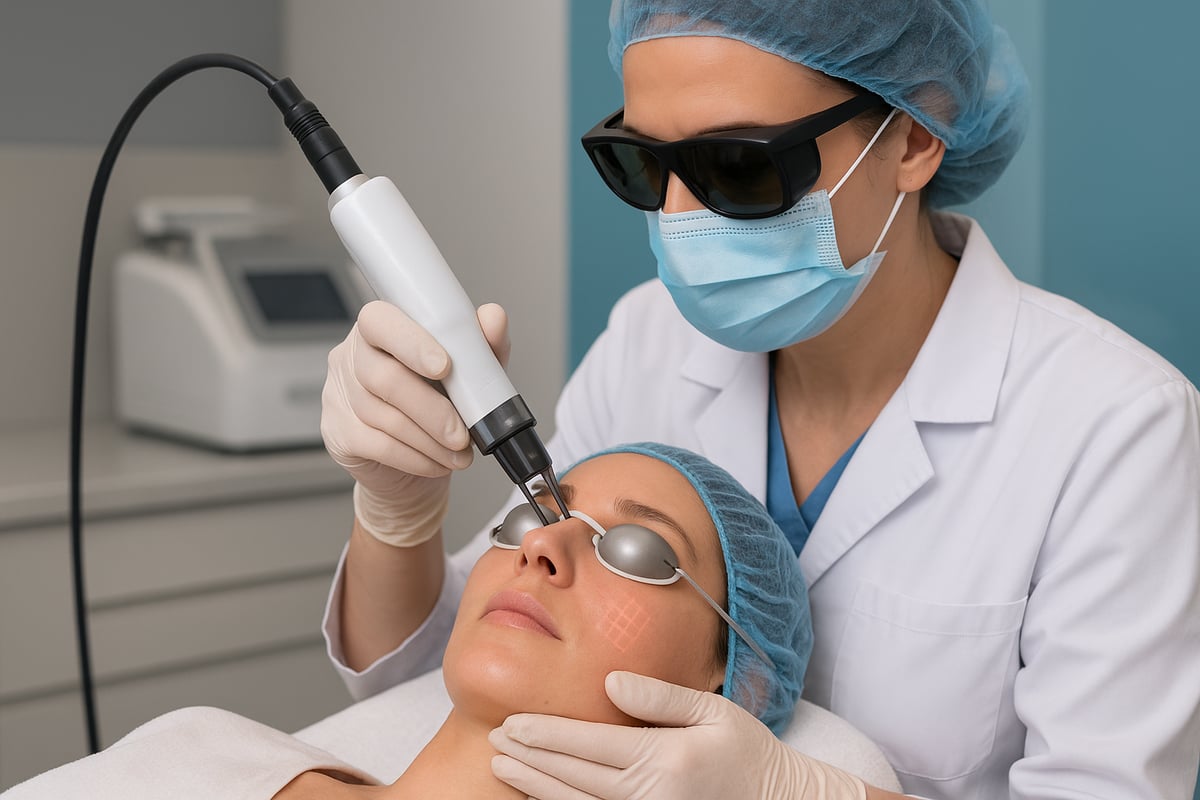
Step 1: Consultation and Assessment
Your journey with the fractional co2 laser begins with a comprehensive consultation. A board-certified dermatologist or licensed laser specialist reviews your medical history, skin type, and specific concerns such as wrinkles, scars, or pigmentation.
During this session, your provider evaluates your skin using advanced imaging tools. You will discuss treatment goals, expected results, and any potential risks. Informed consent is obtained, ensuring you fully understand the procedure.
Step 2: Pre-Treatment Preparation
Preparation is crucial for a safe fractional co2 laser experience. In the weeks leading up to your appointment, you will be instructed to:
- Avoid sun exposure and tanning beds.
- Discontinue retinoids, exfoliating acids, and other harsh skincare products.
- Start antiviral medication if you have a history of cold sores.
- Stop certain medications that increase photosensitivity.
These measures minimize the risk of complications and optimize your skin for laser resurfacing.
Step 3: Day of Procedure
On the day of your fractional co2 laser treatment, your provider will cleanse your skin thoroughly to remove makeup, oil, and debris. A topical anesthetic cream is applied to the treatment area to enhance comfort.
Treatment zones may be marked to guide precise laser application. You will also be given protective eyewear to shield your eyes from the laser light.
Step 4: Laser Session Details
The actual fractional co2 laser session typically lasts 15 to 60 minutes, depending on the size and number of areas treated. The device emits a specific wavelength of light, targeting micro-zones of the skin in a grid-like pattern.
Patients usually describe sensations of heat, tingling, or mild discomfort. Most modern fractional co2 laser systems in 2025 are equipped with cooling devices or advanced pulse technology to maximize comfort and minimize pain.
Step 5: Immediate Aftercare
Following your fractional co2 laser session, your skin may appear red and swollen, with a unique grid pattern from the laser. Your provider applies a soothing ointment, such as Aquaphor, and may use cooling packs to reduce heat sensation.
Detailed instructions are given for the first 24 hours:
- Keep the skin clean and moisturized.
- Avoid touching or picking at the treated area.
- Refrain from applying makeup or harsh products.
Strict sun protection is essential to prevent pigmentation issues.
Step 6: Recovery Timeline and Patient Journey
The recovery phase varies but typically lasts 5 to 14 days. Initial redness and swelling subside within the first week. Peeling and crusting may occur as your skin heals and regenerates.
A typical timeline looks like this:
| Day | Appearance | Care Tips |
|---|---|---|
| 1-2 | Red, swollen, grid pattern | Gentle cleansing, ointment |
| 3-5 | Peeling, mild crusting | Moisturize, avoid sun |
| 6-10 | Fading redness, smoother skin | Resume light activities |
| 11-14 | Subtle pinkness, healing | Continue sun protection |
Recent studies have shown that fractional co2 laser is highly effective for early scar management, often outperforming other interventions. For instance, a fractional CO₂ laser for early scar treatment study in 2025 demonstrated superior results compared to other therapies, underscoring its value for both new and established skin concerns.
Step 7: Provider Qualifications and 2025 Advances
Choosing the right provider is essential for safe and successful fractional co2 laser outcomes. In 2025, reputable clinics utilize advanced laser systems with improved safety features and faster recovery times. Always seek treatment from a board-certified dermatologist or licensed professional with extensive experience in laser resurfacing.
Technological advancements have led to more predictable results, shorter downtime, and enhanced patient comfort. Average procedure times range from 30 to 45 minutes, with most patients reporting only mild discomfort and returning to daily activities within 7 to 10 days.
By following each step and partnering with a skilled provider, you can maximize the benefits of your fractional co2 laser treatment and enjoy healthier, more radiant skin.
Benefits and Results of Fractional CO2 Laser Resurfacing
Unlocking smoother, firmer, and more radiant skin is possible with a fractional co2 laser. This advanced procedure is renowned for delivering noticeable improvements in skin texture, tone, and elasticity, making it one of the most sought-after skin rejuvenation treatments in 2025.
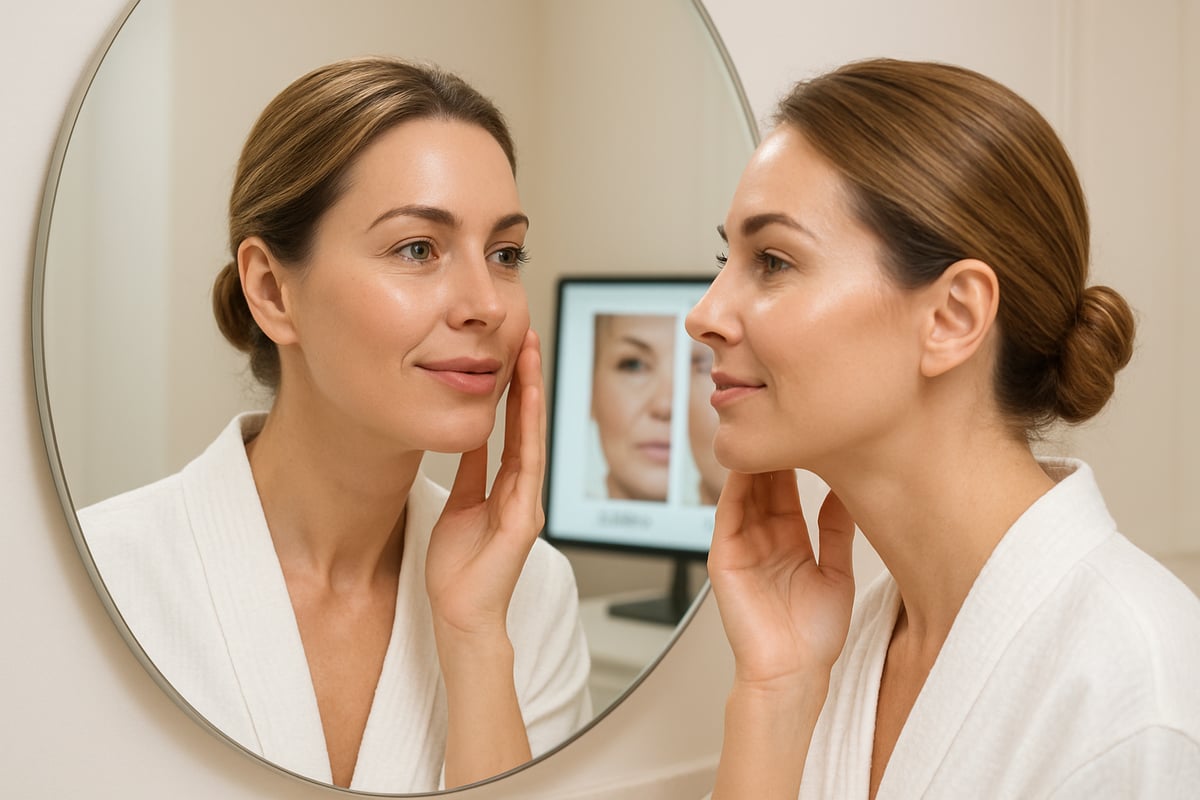
Transformative Skin Improvements
Fractional co2 laser treatments work by targeting microscopic zones within the skin, stimulating collagen and elastin production. Patients typically notice a dramatic reduction in fine lines, deep wrinkles, acne scars, and enlarged pores.
With each session, the skin becomes noticeably smoother and firmer. Sun spots, age spots, and areas of hyperpigmentation often fade, resulting in a more even complexion. Many patients also experience a visible tightening effect, especially in areas prone to laxity around the eyes and mouth.
Long-Lasting Collagen Stimulation
A major advantage of the fractional co2 laser is its ability to trigger ongoing collagen synthesis. Improvements continue for three to nine months after a single treatment as the skin remodels itself from within. This prolonged effect means that results not only appear quickly but also last longer than many other resurfacing methods.
Depending on individual goals, some patients achieve optimal results with one session, while others may benefit from a short series spaced several months apart. Maintenance sessions can help prolong the youthful effects.
Clinical Results and Patient Satisfaction
The effectiveness of fractional co2 laser resurfacing is supported by robust clinical data. Most studies report 70-90% patient satisfaction rates, with significant improvement in skin quality scores across a variety of concerns. According to a recent Patient satisfaction after facial laser resurfacing study, individuals noted remarkable enhancements in facial appearance and quality of life post-treatment.
Many before-and-after images reveal reduced acne scarring, softened periorbital wrinkles, and revitalized skin tone. These transformations often translate into increased self-confidence and improved self-image for patients.
Comparison to Other Skin Rejuvenation Treatments
How does the fractional co2 laser stack up against other options like microneedling or chemical peels? While all three can improve texture and tone, the fractional co2 laser offers deeper collagen stimulation and more dramatic results, especially for moderate to severe concerns.
| Treatment | Depth of Action | Downtime | Ideal For |
|---|---|---|---|
| Fractional CO2 Laser | Deep dermal | 5-14 days | Wrinkles, scars, laxity |
| Microneedling | Superficial | 2-5 days | Mild texture, early aging |
| Chemical Peel | Variable | 1-7 days | Pigmentation, surface issues |
While microneedling and peels are excellent for maintenance or mild concerns, the fractional co2 laser is preferred for more significant rejuvenation.
Limitations and Combination Approaches
Despite its versatility, the fractional co2 laser is not a cure-all. It may not fully correct severe sagging, deep surgical scars, or very uneven pigmentation. Some patients with resistant issues may require a combination of modalities, such as pairing fractional co2 laser with microneedling or platelet-rich plasma (PRP), to achieve optimal outcomes.
Personalized treatment plans, developed with a qualified provider, ensure the best possible results. Patients are encouraged to discuss their specific goals and limitations during consultation.
Risks, Side Effects, and Safety Considerations in 2025
Fractional co2 laser treatments offer powerful results, but understanding the risks and side effects is essential for anyone considering this procedure in 2025. With evolving technology and better screening, the safety profile of fractional co2 laser has improved, yet all patients should be aware of what to expect before, during, and after their session.
Common Side Effects of Fractional CO2 Laser
Most people experience temporary side effects following fractional co2 laser resurfacing. These typically include:
- Redness and swelling
- Mild crusting or flaking
- Itching or tightness
- Temporary darkening or lightening of skin
Symptoms usually subside within 7 to 14 days. The treated area may look sunburned, and pinpoint bleeding or a “grid” pattern can appear for a few days. These effects are normal and part of the skin’s healing response to fractional co2 laser energy.
Less Common Risks and 2025 Safety Advances
Less frequent side effects include infection, scarring, persistent redness, and rare cases of hypopigmentation. Advances in 2025 have led to improved patient screening and stricter protocols, which help lower these risks significantly. For example, recent clinical data shows infection rates below 1 percent and scarring rates under 0.5 percent.
A published long-term study on fractional co2 laser in Asian skin highlighted that most adverse effects are mild and resolve over time with proper aftercare. Innovations in fractional co2 laser technology, such as more precise energy delivery and built-in cooling, further enhance safety.
Prevention and Patient Safety
To minimize complications, patients must follow strict aftercare instructions. Key prevention steps include:
- Using gentle cleansers and moisturizers
- Avoiding sun exposure and wearing broad-spectrum sunscreen
- Taking prescribed antivirals if prone to cold sores
- Not picking or scratching at healing skin
Choosing a qualified provider with experience in fractional co2 laser is crucial for safety. Always disclose your full medical history, including any medications, to your clinician before treatment.
Who Should Not Get Fractional CO2 Laser and Balancing Risks
Certain individuals should avoid or delay fractional co2 laser procedures. Contraindications include:
- Active skin infections or herpes outbreaks
- Recent isotretinoin use
- Uncontrolled diabetes or immune disorders
- History of poor wound healing or keloids
- Pregnancy
Balancing the benefits of fractional co2 laser with its potential risks is a personal decision best made with a knowledgeable provider. Always weigh the expected improvements against the possibility of side effects. If a mild rash or irritation develops post-procedure, contact your clinic promptly for guidance. With the right precautions and expert care, most patients achieve safe, satisfying results.
Choosing the Right Provider and What to Ask
Selecting the right provider for your fractional co2 laser treatment is the most critical decision you will make on your skin rejuvenation journey. The expertise and credentials of your practitioner directly impact your safety, results, and overall satisfaction.
What Qualifications Should Your Provider Have?
Always seek a board-certified dermatologist or a licensed laser specialist with verifiable experience in fractional co2 laser procedures. Ask about their specific training, how many treatments they perform annually, and their experience with your skin type and concern.
Do not hesitate to request before-and-after photos of actual patients. Review their complication rates and ask how they manage side effects. A reputable provider will be transparent and encourage your questions.
Top Questions to Ask During Your Consultation
Prepare a list of questions to ensure you are fully informed:
- What type of fractional co2 laser device do you use, and why?
- How many years of experience do you have with this technology?
- What results can I realistically expect for my skin goals?
- What are the most common risks or complications?
- How is patient safety ensured during and after the procedure?
- Are there alternatives or complementary procedures, such as Eclipse Microneedling Toronto, that might suit my needs?
Your consultation should include a thorough skin assessment and a discussion of your medical history. The right provider will tailor the treatment plan to your unique needs, not offer a one-size-fits-all approach.
Evaluating Clinic Credentials and Safety
Look for clinics with up-to-date technology, robust infection control protocols, and a strong reputation in the community. Independent reviews and word-of-mouth recommendations can provide valuable insight into patient experiences with fractional co2 laser.
Red flags to watch for include:
- Non-medical staff performing treatments
- Lack of clear answers about risks or device types
- No visible before-and-after results
- Pressure to book multiple sessions without a proper assessment
Checklist: Vetting a Fractional CO2 Laser Clinic
| Step | What to Look For |
|---|---|
| Provider Credentials | Board certification, laser-specific training |
| Device Quality | Modern, FDA-approved fractional co2 laser devices |
| Patient Safety | Clear protocols, emergency procedures |
| Results Portfolio | Real patient photos, case studies |
| Transparent Pricing | Detailed cost breakdown, payment options |
| Patient Reviews | Consistent positive feedback, high satisfaction |
Cost, Insurance, and Testimonials
The average cost for a fractional co2 laser session in 2025 ranges from $1,000 to $3,000. Many clinics offer package deals or financing to help manage expenses. As this is a cosmetic procedure, insurance coverage is rare.
Patient testimonials are invaluable. Look for independent reviews that mention realistic outcomes, attentive care, and responsive aftercare support.
Final Thoughts
Choosing a trusted provider for your fractional co2 laser treatment is the foundation of a safe and successful experience. Take time to research, ask questions, and review your options. A well-chosen clinic will not only deliver superior results but also support you at every step of your skin transformation.
Frequently Asked Questions About Fractional CO2 Laser
Thinking about fractional co2 laser treatment? Here are the answers to the questions patients ask most often in 2025.
Does the fractional co2 laser procedure hurt?
Most patients describe the sensation as a feeling of heat and tingling, with mild to moderate discomfort. Topical numbing cream is applied before the session, and some clinics offer cooling devices or local anesthesia for sensitive areas. Compared to older technologies, fractional co2 laser is generally more comfortable.
How many sessions are needed for best results?
Many people see significant improvement after just one fractional co2 laser session, especially for wrinkles and scars. However, deeper concerns or severe acne scarring may require two to three treatments, spaced several months apart, for optimal results.
Can fractional co2 laser be performed on darker skin tones?
Advances in 2025 have made the procedure safer for a wider range of skin types. Still, those with very dark skin (Fitzpatrick V-VI) may be at higher risk for temporary hyperpigmentation. An experienced provider will recommend a customized approach or suggest alternative treatments if needed.
How soon will I see results, and how long do they last?
Initial improvements are visible within 7 to 14 days as redness fades and new skin appears. Collagen continues to develop for up to 9 months, and results from fractional co2 laser can last one to five years, depending on your skincare routine and sun protection.
Can fractional co2 laser remove acne scars completely?
While many patients see a dramatic reduction in the depth and appearance of acne scars, complete removal is rare. Fractional co2 laser significantly smooths and blends scars, but residual texture may persist, especially with deep or pitted scars.
What is the downtime and when can I return to work or social activities?
Expect redness, swelling, and peeling for 5 to 10 days after treatment. Most people resume normal activities within one week, using gentle skincare and strict sun protection during healing.
Are there alternatives if I am not a candidate?
Yes, options like Chemical Peel Treatments Toronto offer gentler resurfacing for those who cannot undergo fractional co2 laser. Other alternatives include microneedling and non-ablative lasers.
Can I combine fractional co2 laser with other treatments?
Many providers recommend combining fractional co2 laser with platelet-rich plasma (PRP), microneedling, or light chemical peels to enhance results and address multiple concerns.
What are the most important aftercare steps?
Key steps include gentle cleansing, moisturizing, avoiding sun exposure, and not picking at peeling skin. Following your provider’s detailed aftercare instructions is essential for safe, effective healing.
Is it safe to repeat the procedure, and how often?
Fractional co2 laser can be repeated safely, typically once a year for maintenance or as needed, depending on your skin’s response and goals.
Are there any age restrictions for treatment?
Most candidates are adults over 18. Younger adults may seek fractional co2 laser for early signs of aging or acne scars, while older patients benefit from its rejuvenating effects.
What results can I realistically expect?
Expect noticeable improvements in texture, tone, and firmness, but not perfection. Satisfaction rates in 2024-2025 remain high, with 70-90% of patients reporting significant enhancements in their skin’s appearance.
If you have more questions about fractional co2 laser, consult with a board-certified provider to discuss your unique needs and expectations.

